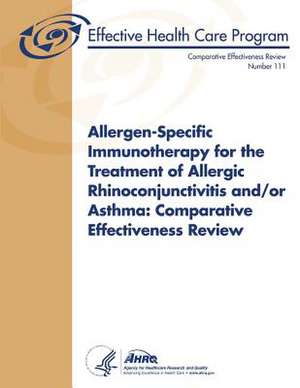Allergen-Specific Immunotherapy for the Treatment of Allergic Rhinoconjunctivitis And/Or Asthma
Autor U. S. Department of Heal Human Services, Agency for Healthcare Resea And Qualityen Limba Engleză Paperback
Preț: 256.46 lei
Preț vechi: 269.97 lei
-5% Nou
Puncte Express: 385
Preț estimativ în valută:
49.08€ • 52.48$ • 40.92£
49.08€ • 52.48$ • 40.92£
Carte disponibilă
Livrare economică 28 martie-11 aprilie
Preluare comenzi: 021 569.72.76
Specificații
ISBN-13: 9781489521620
ISBN-10: 1489521623
Pagini: 494
Dimensiuni: 216 x 280 x 25 mm
Greutate: 1.13 kg
Editura: CREATESPACE
ISBN-10: 1489521623
Pagini: 494
Dimensiuni: 216 x 280 x 25 mm
Greutate: 1.13 kg
Editura: CREATESPACE
